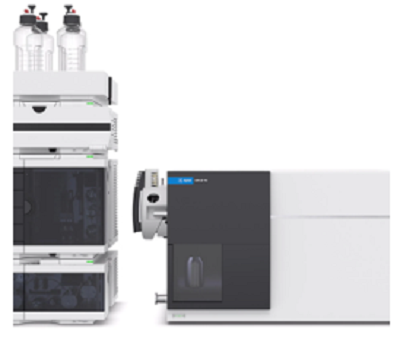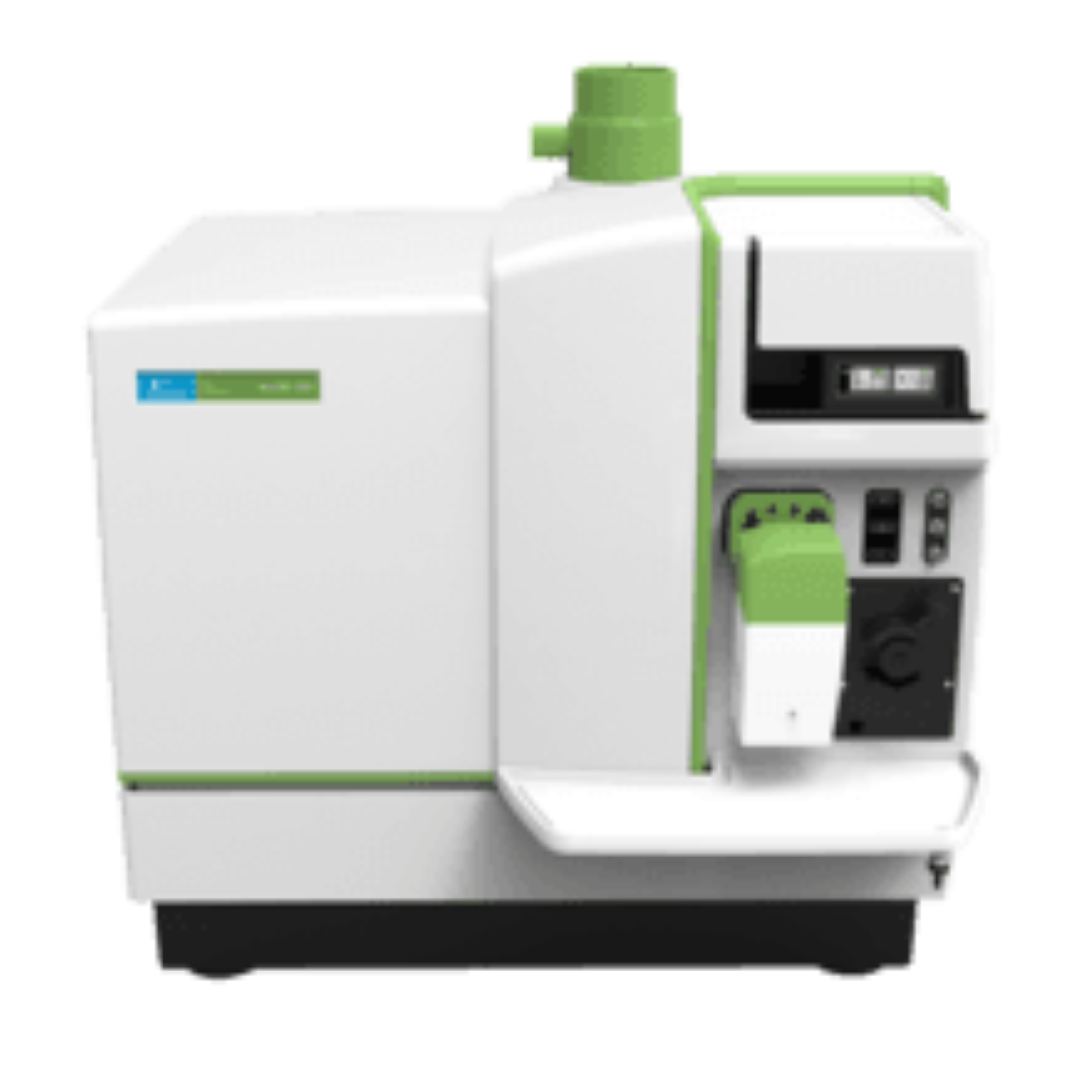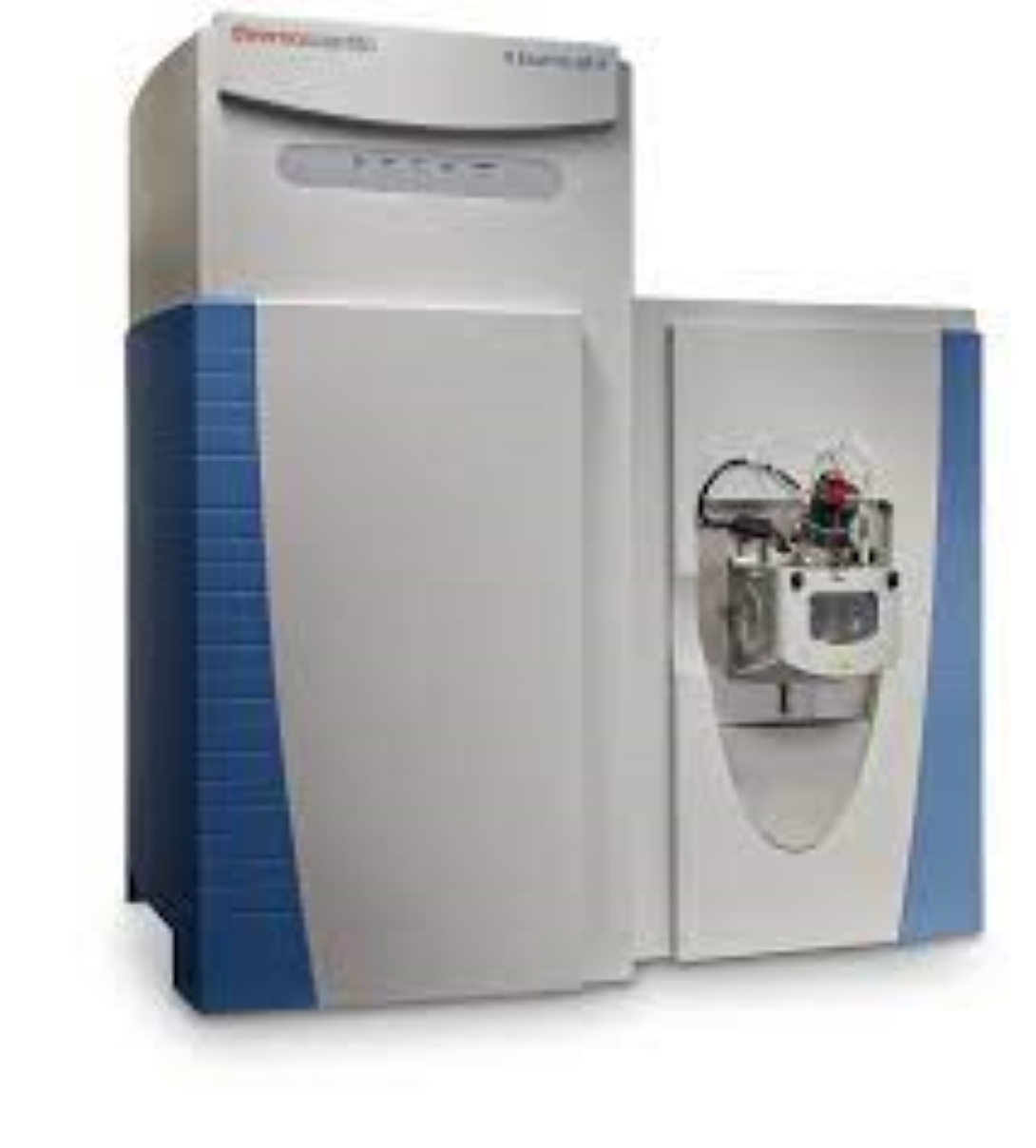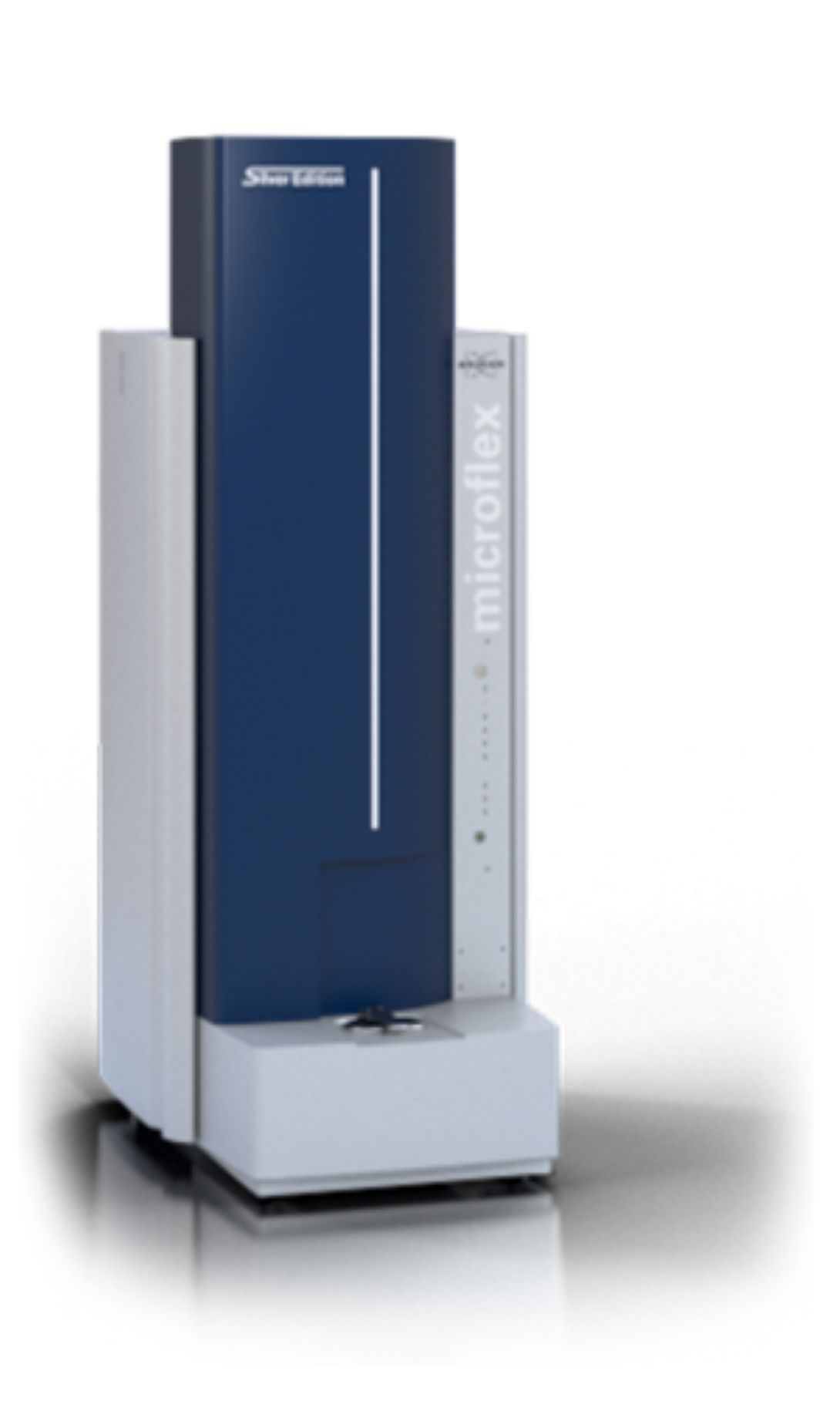Instruments
sdsd Heading link

Instrumentation and services are available to all researchers inside and outside of the university.
Researchers from the Northwestern University and the University of Chicago are provided internal rates as all UIC users. All other users can access services but at an external academic or external non-academic rate, which is determined using subsidy and market rates.
All users are responsible for their own laboratory safety training to be current during each use of the core facilities.
Click to schedule resources
Instruments Heading link
| Instrument | Usage | Training |
|---|---|---|
| AB Sciex Qtrap 5500 | MRM Quantitation | Available |
| AB Sciex Qtrap 6500 | MRM Quantitation | Available |
| Agilent QQQ 6475A | MRM Quantitation | Available |
| Agilent QQQ 6475A | MRM Quantitation | Available |
| Agilent Q-TOF 6545 | Untargeted Metabolics/Lipidomics | Available |
| Bruker MALDI-TOF Microflex | Accurate Molecular Weight | Available |
| Perkin Elmer NexIon 2000s ICP | Metal analysis, Speciation | Available |
| Thermo Orbitrap Velos Pro | Proteomics, PTM | Available |
| Thermo Orbitrap QE-HF | Proteomics, PTM | Available when requested Contact: ch1208@uic.edu |
AB Sciex QTRAP 5500/6500 and Agilent 1290 UPLC Heading link

MRM/SRM Quantitation
The AB Sciex QTRAP is a triple quadrupole mass spectrometer equipped with electrospray (ESI) and atmospheric pressure chemical ionization (ESI APCI). The mass spectrometer is capable of the following triple quad MS-MS experiments: Selective Reaction Monitoring (SRM), Multiple Reaction Monitoring (MRM), Dynamic MRM, product ion scan, precusor ion scan, DIA and neutral loss scan.
The Agilent 1290 series UPLC system consists of refrigerated auto sampler, heated column compartment, gradient LC pumps capable of pressures up to 800 Barr, and photo diode array UV/vis absorbance detector for on-line LC-UV-MS-MS analyses. This is a highly sensitive triple quadrupole instrument that is ideal for high-throughput quantitative analysis of compounds in complex mixtures.
Agilent 6545 Q-TOF and Agilent 1290 UPLC Heading link

Metabolites, natural products
Metabolomics & Lipidomics
Raising the standard for mid-range Q-TOF instruments, the Agilent 6545 Accurate-Mass Q-TOF LC/MS system offers higher resolving power and sensitivity that is on the order of five times higher than our earlier workhorse instruments. Incorporating the new fast and powerful SWARM autotune feature, the 6545 enables every user to the get the best results—whether your lab is focused on profiling metabolomics or lipidomics, screening food and environment samples, or pharmaceuticals. By combining the power of the 6545 with efficient MassHunter data-mining tools and PCDLs, you can generate answers faster and with greater confidence than ever before.
The Agilent 1290 series UPLC system consists of refrigerated auto sampler, heated column compartment, gradient LC pumps capable of pressures up to 800 Barr, and photo diode array UV/vis absorbance detector for on-line LC-UV-MS-MS analyses. This is a highly sensitive triple quadrupole instrument that is ideal for high-throughput quantitative analysis of compounds in complex mixtures.
Agilent 6475 triple quadrupole LC/MS Heading link

MRM/SRM Quantitation
The new Agilent 6475 triple quadrupole LC/MS is the latest evolution of the reliable LC/MS/MS workhorse customers trust the most. This sensitive, robust, and versatile triple quadrupole mass spectrometer employs several technological advantages like the superheated Agilent Jet Stream (AJS) ion source, curved and tapered collision cell, heated hyperbolic quadrupoles, and ± 20 kV high-energy dynode detector system. The 6475 LC/TQ also features instrument intelligence technologies such as early maintenance feedback, scheduled tune and check-tune, and intelligent secondary injection workflows.
Through advanced hardware, required limits of detection for the analysis of pesticides, veterinary drugs, PFAS, nitrosamines, and other regulated methods can easily be achieved day in and day out. Coupled with sophisticated, yet easy to use onboard instrument intelligence, any lab can maximize uptime, maintain peak instrument performance, help anticipate maintenance events, and achieve confidence in the results.
Perkin Elmer NexIon 2000s ICP-MS Heading link

Elemental analysis and quantification
PerkinElmer’s NexION 2000s is the most versatile ICP-MS on the market, featuring an array of unique technologies that combine to deliver the highest performance no matter what your analytical challenge. Discover the effortless versatility of an instrument that makes it easy to handle any sample matrix, any interference, and any particle size. Coupled to new Perkin Elmer HPLC system, speciation analysis for arsenic and mercury is also available for users.
- A dedicated SMARTintro™ sample-introduction module simplifies operator setup, streamlining your workflows
- Extended Dynamic Range capabilities provide the ability to detect high-and low-level elements in a single sample run
- Three quadrupoles, three gas channels, and three modes of operation combine to offer better interference removal, delivering better detection limits/improved data accuracy
- The industry’s fastest data acquisition speed on the market (100,000 points/sec) to handle any particle size
- A new solid-state RF generator with revolutionary LumiCoil™ technology – first ICP-MS RF coil that requires no maintenance or cooling
- Triple Cone Interface with Quadrupole Ion Deflector, delivering no maintenance beyond the cones
- Syngistix™ software provides an intuitive interface that mirrors your workflow, with left-to-right, icon-based navigation that guides you through your analysis. Plus, it’s a cross-platform solution, easing the transition from technique to technique
Thermo Fisher Orbitrap Velos Pro with ETD Agilent nanoHPLC Heading link

Global proteomics, Biomarker discovery, Post-translational modifications
Quantitative proteomics (SILAC/TMT/iTRAP)
Building on the industry-leading Thermo Scientific Orbitrap platform, the Thermo Scientific Orbitrap Velos Pro hybrid ion trap-Orbitrap mass spectrometer features dual-pressure linear ion trap technology that delivers increased sensitivity and dynamic range with ultimate robustness. With the Thermo Scientific Velos Produal-pressure linear ion trap front end, rapid scanning enables higher productivity and Generation II optics with neutral blocking technology provide enhanced ruggedness for the system. The outstanding high-resolution, accurate-mass (HR/AM) data quality and sensitivity of the Orbitrap Velos Pro™ system, whether using CID, HCD or optional ETD fragmentation, makes it ideal for identification of low-level proteins in complex matrices, rapid quantitation of isobarically labeled peptides and structural elucidation of metabolites.
Nanoflow LC is widely used for high resolution separations and high sensitivity MS detection. The 1260 Infinity Nanoflow LC system incorporates Agilent’s unique Electronic Flow Control (EFC) with active feedback and real-time flow adjustment. EFC delivers a constant flow to the column that is independent of back pressure in the system. Combined with Agilent’s capillary and nanoflow pumps, EFC is the gold standard for reliable and robust nanoflow performance. The 1260 Infinity Nanoflow LC is extremely easy to use. Precise flow rates support stable ion generation to ensure obtain high sensitivity nanoflow LC/MS performance.
Thermo Fisher Orbitrap Q Exactive HF MS Heading link

Global proteomics, Biomarker discovery, Post-translational modifications, Quantitative proteomics (SILAC/TMT/iTRAP)
Thermo Scientific™ Q Exactive™ HF hybrid quadrupole-Orbitrap mass spectrometer featuresan ultra-high-field Orbitrap analyzer which doubles its speed and resolution – more sample runs and amazing data quality. Built on the proven performance of the Q Exactive Plus platform, the Q Exactive HF mass spectrometer utilizes the same Active Beam Guide technology and Advanced Quadrupole design for very stable system operation and exceptional analytical performance. The Q Exactive HF mass spectrometer is designed for your toughest discovery and quantitation challenges where the combination of speed and highest performance are essential for the highest quality scientific results. Compared to the Velos Pro system, QE-HF will analyze complex mixture with faster speed and quantify with higher confidence. Furthermore, DIA (data independent acquisition) for global proteomics and PRM (parallel reaction monitoring) for targeted quantification are available on QE-HF.
Bruker Microflex LRF MALDI-TOF MS Heading link

Accurate Mass for small molecules and proteins
The microflex LRF with 15k resolution in reflectron mode handles a wide range of analytical challenges and provides linear-reflectron based operating modes. It is easy to use with intuitive operations that are ideal for non-expert users and busy multi-instrument labs.
The instrument’s design with its reflector and linear mode operation allows for highest flexibility for various analyte types, such as oligonucleotides, proteins and polymers. In linear mode the system can be run in positive and negative ion mode. The gridless design of the reflector enables unmatched sensitivity. Bruker’s proprietary AnchorChip™ technology further increases the sensitivity by a factor of 10.
Highest resolution across an extended mass range is enabled by the ion source with its proprietary panoramic PAN™ pulsed ion extraction. The best mass resolution of a bench-top MALDI TOF is achieved due to an independent reflector power supply, the integrated high performance MCP detector and the high-precision digital analogue converters.
The microflex LRF can be operated in positive and negative ion mode using the linear detector. The saturation free detector technology enables highest dynamic range and superior performance for high mass detection. Ion generation is achieved using a 60 Hz N2-Cartridge-Laser including variable power attenuator and UV optics The laser operates at 337 nm. The microScout™ ion source uses the exact dimensions of 1/4 microtiter plate with a medium area target plate (54 mm x 36 mm).